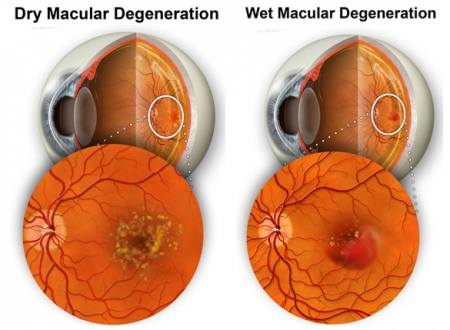Macular Degeneration
Macular Degeneration is a disease that is typically associated with the ageing process, although it can occur in relatively young patients. The macula is the area of the retina that we use to view high detail central vision. This is the area that is most tightly packed with cones (cells that see color and detail). It is also the area with the highest metabolic activity. As with any metabolic activity, there are waste products produced that must be cleared from the tissue. One of the early signs of Macular Degeneration is a slowing of the removal of these metabolic byproducts in the retina - leading to the formation of Drusen (clumps of these byproducts that have not been cleared from the retina). As the disease progresses, areas of the macula begin to atrophy and drop out resulting in central vision loss. In the Wet Form of the disease, new blood vessels grow into the retina in an attempt to save the dying tissue. These new vessels have weak walls and tend to rupture and bleed – destroying even more tissue. Thanks to the progress of technology, we now have procedures to stop the wet form if detected early enough.
Risk factors for developing macular degeneration include smoking, UV exposure, family history, and diet. There is good clinical evidence that nutrition plays a big role in the protection against macular degeneration. For more information, read our section about Nutrition & Age-Related Macular Degeneration*

